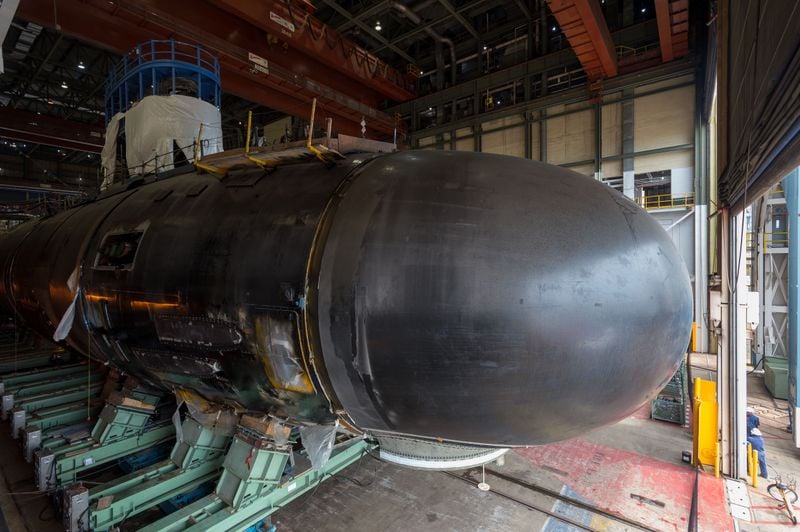
Money to buy a second Virginia-class submarine is number one on the Navy’s $5.4 billion Fiscal Year 2021 Unfunded Priorities List, USNI News has learned.
The $2.7 billion for the nuclear attack boat accounts for more than half of the request that also includes about 30 items ranging from additional aircraft, military construction projects, weapons and software upgrades.
The ask for the new Virginia falls inline with long-established the Navy’s shipbuilding plan that calls for building two Virginia-class fast attack submarines a year to mitigate the effects of a pending drop in the Navy’s submarine fleet. Shipbuilders also want the two-per-year build pace to keep their serial production lines running.
The second Virginia-class submarine “adds capable capacity consistent with National Defense Strategy focus on Great Power Competition. This enables Navy to buy a 10th Virginia-class submarine under the Block V contract,” reads the Navy’s justification in a copy of the list reviewed by USNI News.
The Navy’s contract with General Dynamics Electric Boat covers nine subs between 2019 and 2023 with an option for a tenth sub. By only requesting funding for one Virginia-class in the FY 2021 budget request, the Navy is still in compliance with its contract with Electric Boat.
The Navy’s unfunded priorities list, with the request for Virginia-class funding at the top, was welcomed by Rep. Joe Courtney (D-Conn.), the chair of the House Armed Services seapower and projection forces subcommittee.
“It should be no surprise that restoring the second 2021 Virginia-class submarine ranks as the highest unfunded need for the Navy,” Courtney said in a statement. “Congress has consistently heard from Navy leaders, combatant commanders, and experts about the growing demand for submarine capabilities as countries like China and Russia step up their undersea activity. They have urgently warned us that we need more submarine construction, not less, in order to mitigate the nearly 20 percent reduction in the fleet we presently face within this decade. That’s why we worked so hard to achieve and sustain the two-a-year build rate since 2011, and why deviating from that plan, as proposed in the budget, makes little strategic sense at this critical time.”
Lawmakers have previously supported the Navy’s desire to buy as many fast attack submarines as the service could afford and industry could build. Last year, Congress provided enough advance procurement funds in the FY 2020 budget to support building two boats in 2021. The Navy has a shortfall in the number of attack subs and the deficit will only get worse as older Los Angeles-class subs retire quicker than newer Virginia-class subs are launched. The submarines are considered a critical part of the National Defense Strategy.
“Congress has demonstrated its strong and bipartisan commitment to this second 2021 submarine, having already provided more than $1.1 billion in advanced funding to support it,” Courtney said.
Other unfunded priorities the Navy is seeking funding for include:
- $525.2 million to buy five additional F-35C Lightning II Joint Strike Fighters. These are the catapult-launched and arrested landing variants designed for carrier operations
- $357 million to buy two additional E-2D Advanced Hawkeye aircraft. The additional aircraft procurement maximizes production line capability to meet the updated Program of Record objectives, which increase from 75 to 86 aircraft.
- $211.4 million to buy two additional CMV-22B Osprey tiltrotor aircraft. This request increases the total procurement from 44 to 46 CMV-22B aircraft. The Program of Record calls for buying 48 Ospreys, which are becoming the Navy’s new carrier air logistics fleet, as the Navy retires its aging C-2A Greyhound fleet of aircraft.





